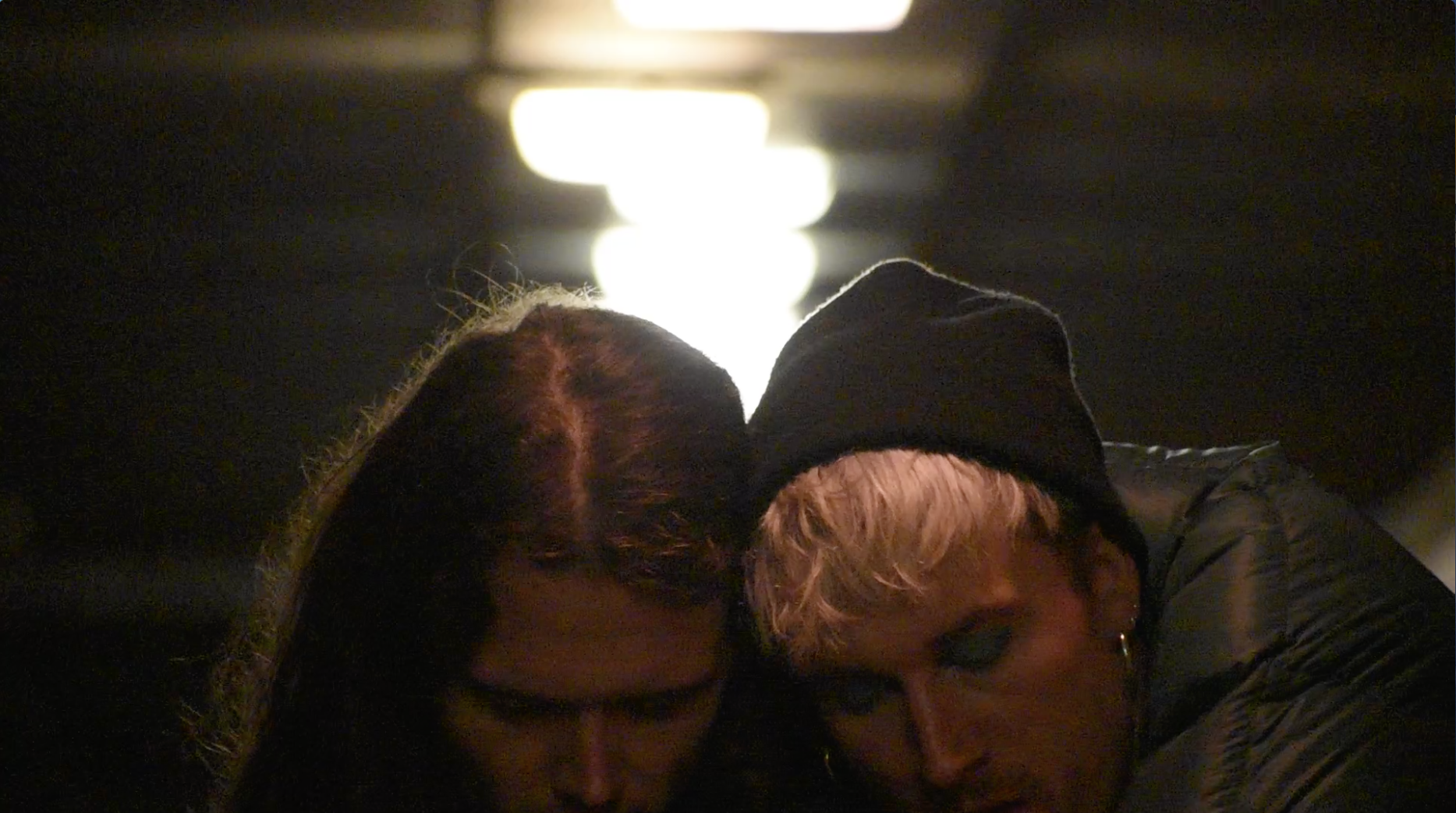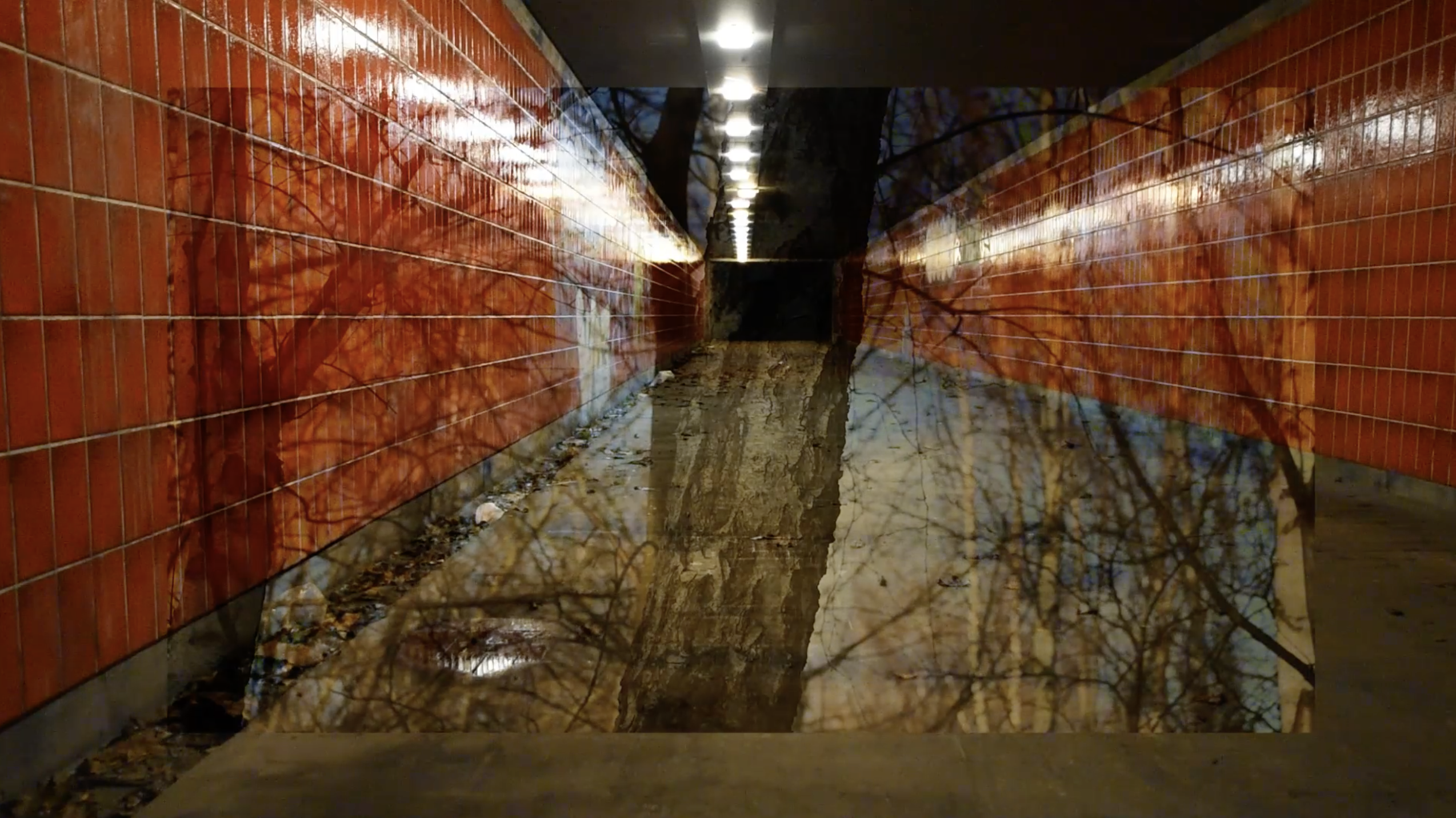
The exhibition SpectRoom: Fluid Narratives curated by me aims to tell stories that explore gender identity, queerness, love, loss and connection.
In these challenging and bleak times, when the opportunities to get together as a community are strictly limited due to COVID 19, I think it’s important to stay positive, uplift each other and use their social media as a platform to discuss mental health and belonging.
SpectRoom would be a digital safe space where both the artists and the audience will be encouraged to forge their own narratives, that dismantle cis-normativity and gender binarism.

The first artist who will present their work for SpectRoom is Rob Hesp, (They-He) a gender non conforming artist, choreographer and dancer from Leeds, England, currently based in Copenhagen, Denmark.
Rob is interested in the ways people come together, using their work to suggest alternate modes of being and feeling. Their performance work is constructed from a fluid and evolving queer perspective, often using viscous mess, material textures and sculptural object forms alongside the moving body.
Rob seeks to be fully inclusive in their creative practice, frequently working in collaboration with other artists and makers and across disciplines – using movement and bodily sensation as key starting points for work with film, written text and live performance. Their work has been presented at venues including the V&A Museum and Roundhouse, London as well as at performance festivals including Spill and Latitude.
Francesco Ferranti: Hey, Rob. Who are you and what you do?
Rob Hesp: I feel like creatively I’m pretty spread out – especially at the moment – I’m enjoying exploring a lot of different practices. I’m trained and work in performance – working mostly with movement and dance. I really work a lot with somatic practice – with how movement lives and feels in the body. But I’ve also got a strong connection to writing, I wanted to be a playwright when I went to drama school and I’ve been working on a publication – a book – for the last 6 months, connected to my last choreography, ‘Soft Fruit Punch‘.
Francesco Ferranti: What does Spectrum mean to you?
Rob Hesp: “Spectrum to me as an idea-as a word really holds a lot of movement, signals a state of transit , of fluidity or flux. Yeah, this kind of turning or revolving around an idea through different positions or material densities. This kind of slippery, shifting which I think will be pretty core to my exploration for my piece at the exhibition”, says Rob.
Francesco Ferranti: Can you tell us more about ‘Scaff’, the new film work you created for “SpectRoom: Fluid Narratives“?
Rob Hesp: ‘Scaff‘ (abrv. Scaffolding) is a new film work. It’s a collage and brief visual reflection of the nature of support, and support structures, in the interconnected context of social relationships, architecture and natural environment. Filmed in and around Copenhagen during lockdown.
Francesco Ferranti: How does this film work relate to the concept of the exhibition?
Rob Hesp: ‘Scaff‘ has a real visual emphasis on kinetic energy and exchange, the feeling of weight, or breath, or care as something being passed back and forth. Transferred between people, between the feet and our floor, or into other constructed or found support structures – walls, pillars, trees. I think this relates to the movement and fluid implication of a word like spectrum, looking at it beyond ideas of gender expression or sex.
I wanted to use the images of water to suggest a similar supportive fluidity – a vast oceanic body, both carrying and nurturing life. And creating a rich layering, images over images, considering all these different bodies and structures as being interdependent and connected. Scaff also plays around with the addition of ‘room’ – being filmed in unusual spaces that have been built or planned to in some way hold or support day to day societal function – a tunnel crossing under a road, a swimming platform or maintained natural space within a city




Francesco Ferranti: What’s next for you creatively?
Rob Hesp: In many ways I think ‘Scaff’ is an opening piece for an ongoing project or series. There are so many compositions and ideas that I wasn’t able to explore with this film, largely because of the lockdown and current pandemic. I’d love to keep working on this topic, but in a way that feels more connected physically to different communities here in Copenhagen – expanding both the scale of the work and its impact.
With thanks to all involved
Rob Hesp @rob_hesp rob-hesp.com
Emma Hornum Inanloo @ema0101
Jonas Michell @thetide94
Leonardo Guerra @mal.leolo
